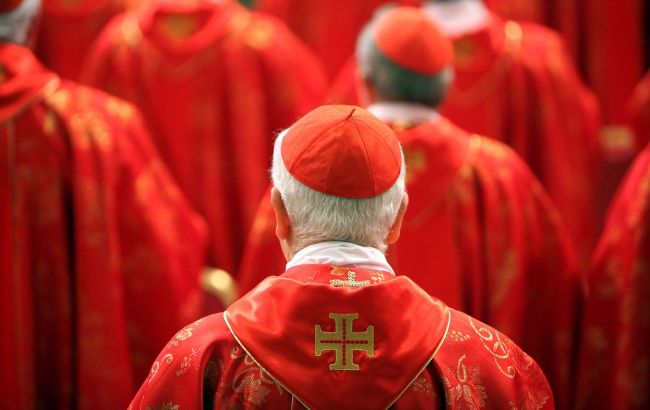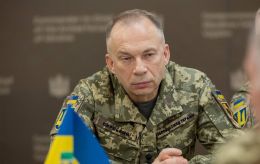Pope Francis died: How new pontiff is elected
 Illustrative photo: how a new pontiff is elected (Getty Images)
Illustrative photo: how a new pontiff is elected (Getty Images)
On Easter Monday, April 21, at the age of 88, Pope Francis died at his residence in the Vatican's Santa Marta house. Now, the Vatican is to hold a vote to elect a new leader of the Catholic Church.
Read more about the procedure for electing the Pope in an article by RBC-Ukraine.
Official confirmation of Pope's death
When a pope dies, a complex, ritualized mechanism is set in motion in the Vatican that combines millennia of tradition, strict discipline, and an element of celestial intrigue. And all of this is to allow one man in a white cassock to step out onto the balcony of St. Peter's and deliver his first speech to the world.
The death of the pontiff is officially announced not by a doctor or a Vatican spokesperson, but by the cardinal-chamberlain. It is he who addresses the Pope by name three times in the presence of the church elite, and if there is no response, he pronounces the phrase in Latin: Vere Papa mortuus est - "The Pope is really dead." From that moment on, the so-called Sede Vacante period begins, a time when the Apostolic See remains vacant.
These days are full of mourning and ceremonies. Requiem masses are celebrated daily in St. Peter's Basilica for the deceased pontiff. People say goodbye to his body, which is on display in the cathedral. And somewhere behind the scenes, high hierarchs are preparing for the next act of this sacred scenario. It is at this time that the chamberlain destroys the "fisherman's ring"-the papal seal that was used to sign documents. A symbol of power that no longer belongs to anyone.
Funeral ceremony of Pope
The funeral ceremony usually takes place on the 4th to 7th day after the death. It is led by the dean of the College of Cardinals. Although the protocol remained majestic, the current Pope Francis changed it towards simplicity: he refused three coffins and a high podium. He even chose in advance not the Vatican grottoes, where most of his predecessors are buried, but the Basilica of Santa Maria Maggiore, his favorite shrine in Rome.
Conclave: election of new pope
After the farewell, it is time to elect a new pope. The election of a new pope begins no earlier than the 15th and no later than the 20th day after the death of the pontiff. And here begins the most mysterious stage - Conclave. Cardinals from all over the world, who are under 80 years old (currently there are 120 of them), gather in the Vatican.
They settle in Santa Marta's House, and the Conclave itself takes place in the Sistine Chapel, which is locked up-literally, as the word conclave implies (Latin for "locked together").
The world is cut off. No communication from the outside: no newspapers, no phones, no Wi-Fi. Guards stand guard, and cardinals pray, meditate, and vote. Sometimes for hours, sometimes for days.
According to a decree issued by Pope Benedict XVI in 2007, to elect a new pontiff, a candidate must receive at least two-thirds of the votes of the cardinals in the electorate.
Each vote is cast in writing, in secret, with the name written in by hand, often in deliberately distorted handwriting. All ballots are burned after the vote. If the smoke from the chimney above the chapel is black, there is no new pope yet. If it is white, he has already been elected.
The smoke is not a joke. Special substances are added to it, and bells ring at the same time to avoid confusion. And that's when the world holds its breath again. The cardinal archdeacon goes out on the balcony of the cathedral and solemnly proclaims: Annuntio vobis gaudium magnum: Habemus Papam! ("I proclaim to you great joy: we have a pope!").
The new pontiff appears in a white robe. Freshly elected, he changes his clothes in a room called the Room of Tears, because it is said that this is where many of the elect allow themselves to shed their first emotions. He goes out to the crowd and gives his first Urbi et Orbi, a blessing to the city and the world.
Earlier, the Vatican announced the death of Pope Francis.
On February 14, the Pope was hospitalized with bronchitis, but his condition worsened in the hospital - he was diagnosed with bilateral pneumonia with asthmatic attacks. The pontiff was periodically given oxygen, and doctors assessed his condition as critical, especially given his age: Francis was 88 years old at the time.
After more than five weeks of fighting the disease, the Pope was discharged from the hospital on March 23. At the same time, doctors insisted on a further two-month rest so that his body could fully recover.

